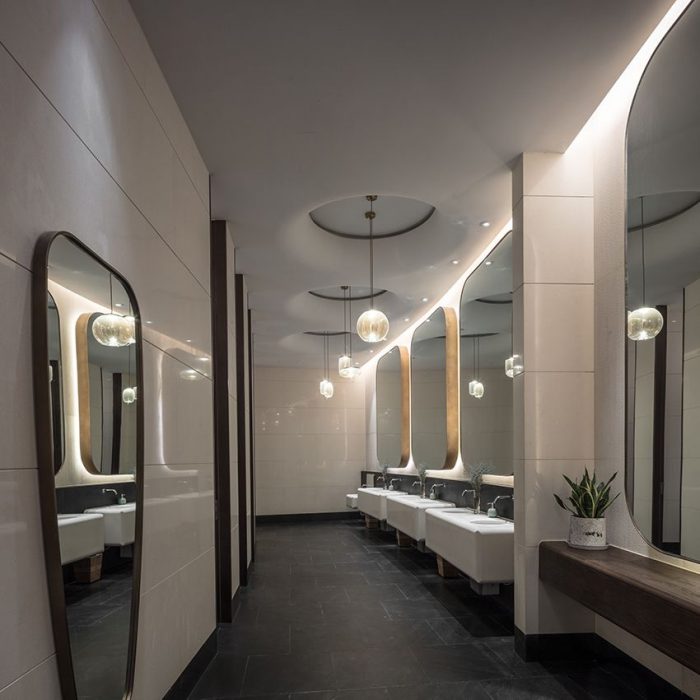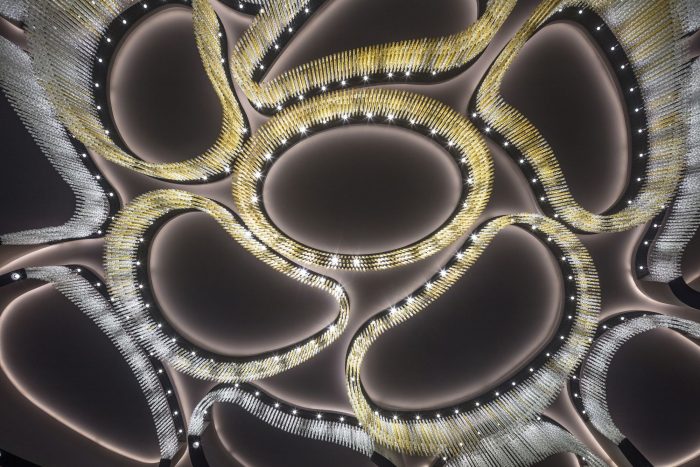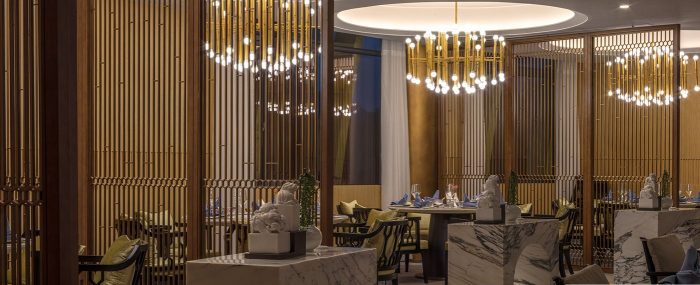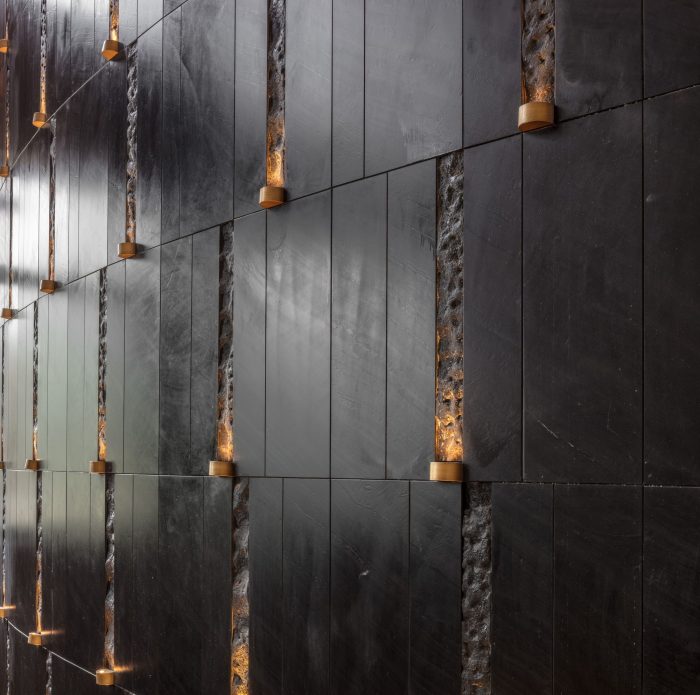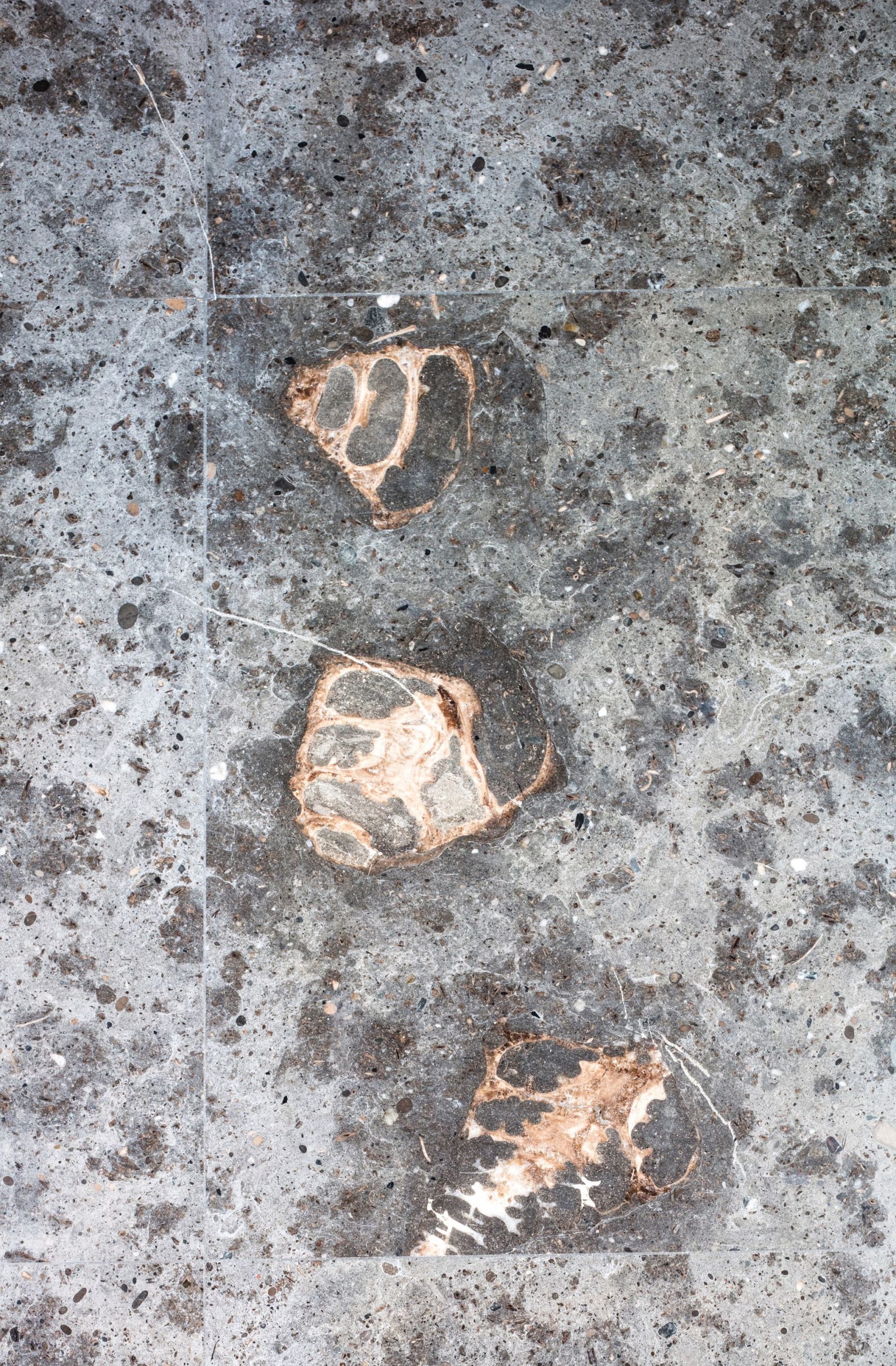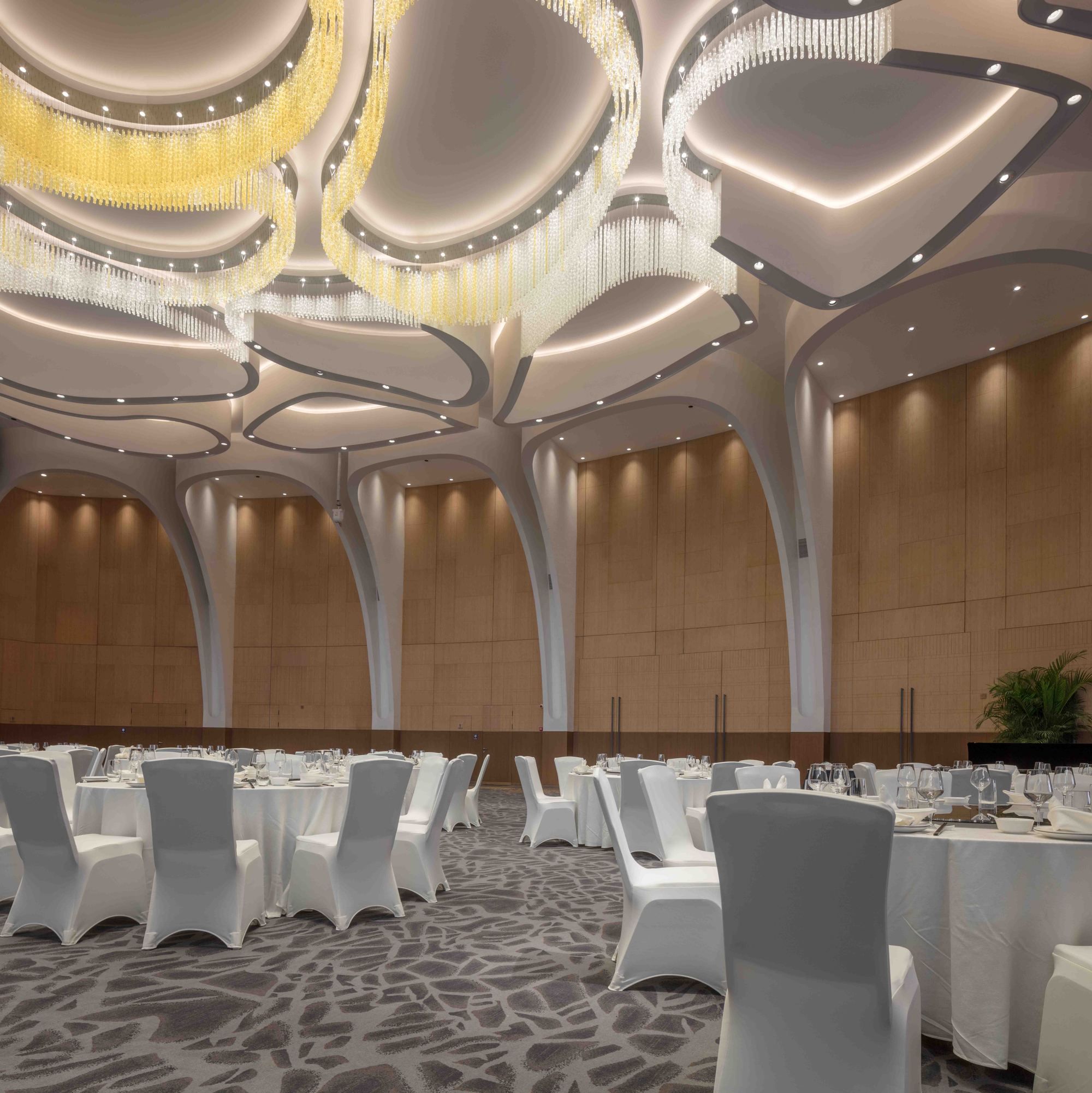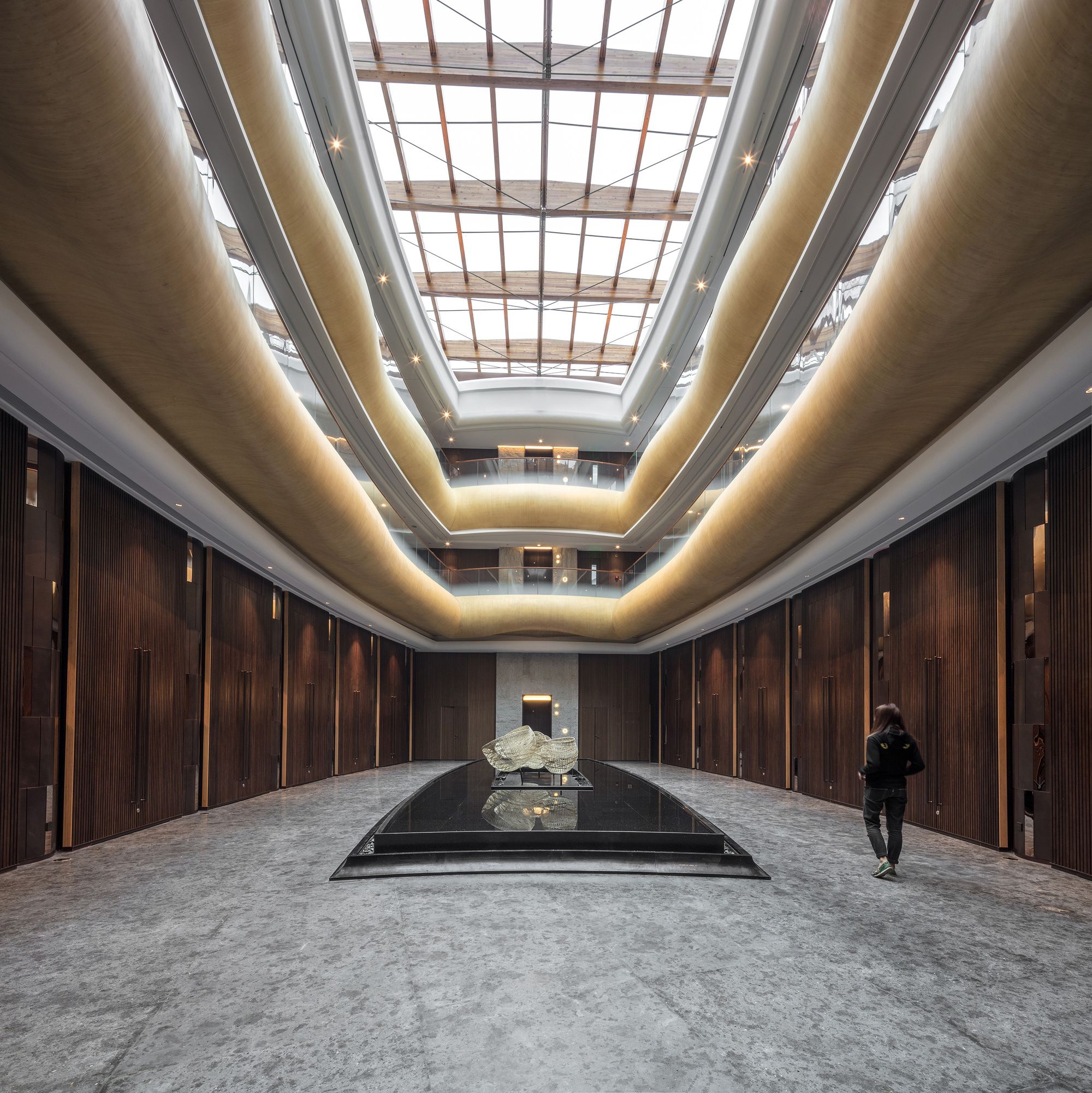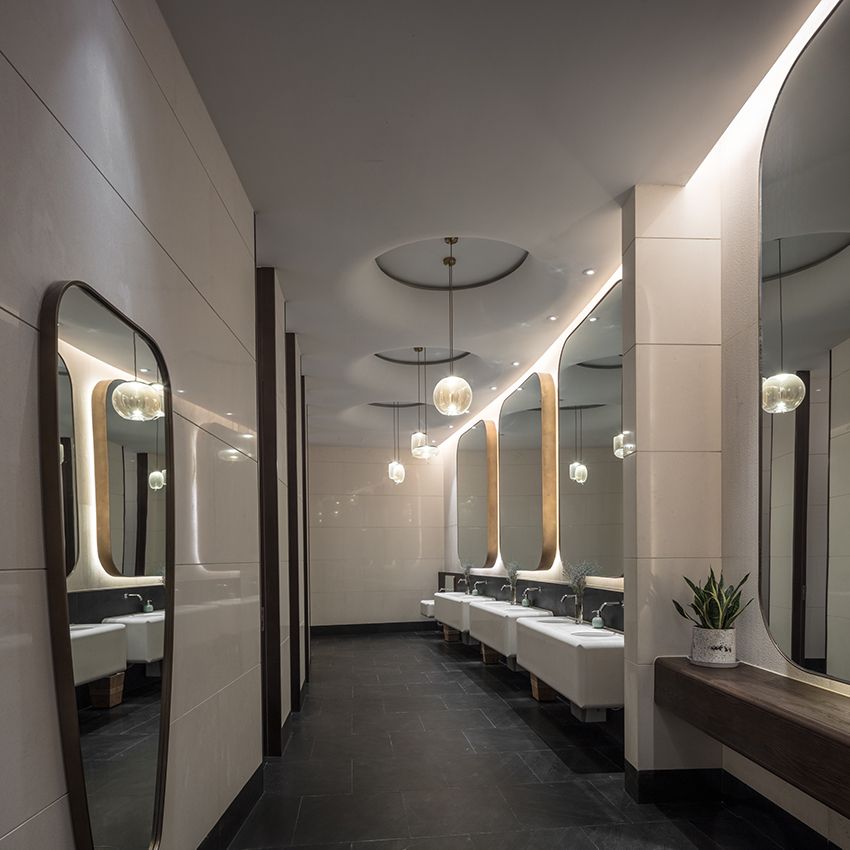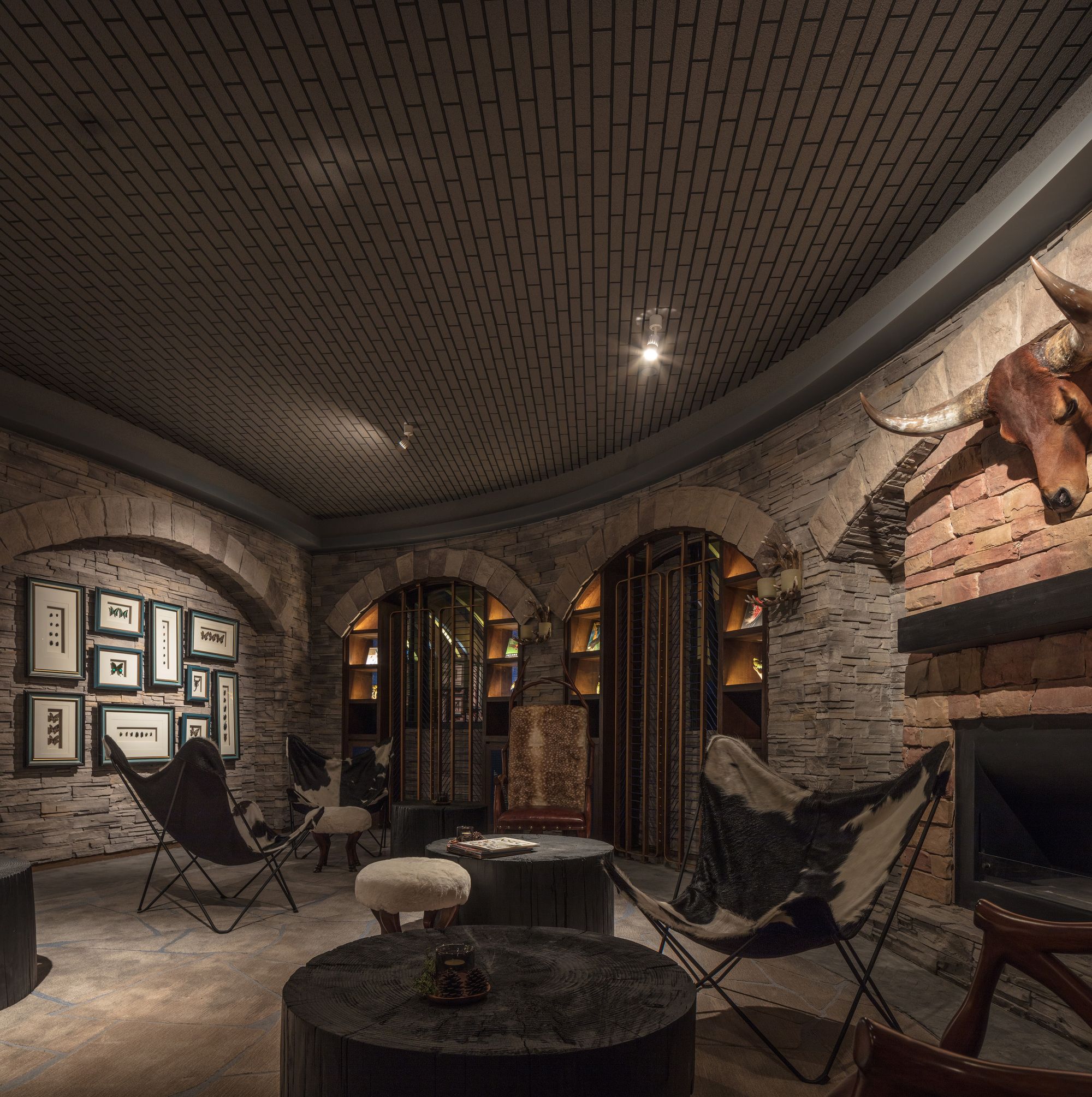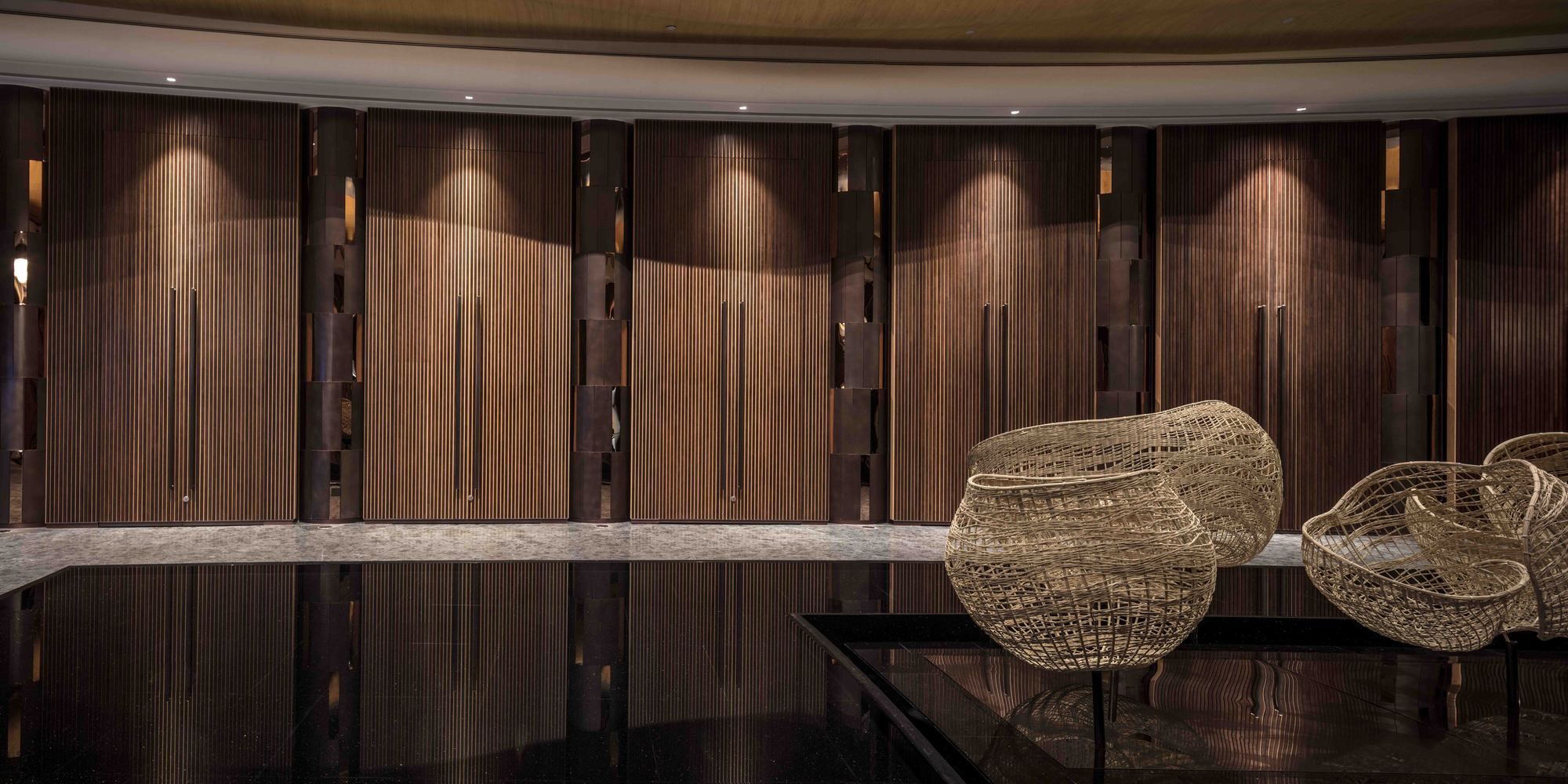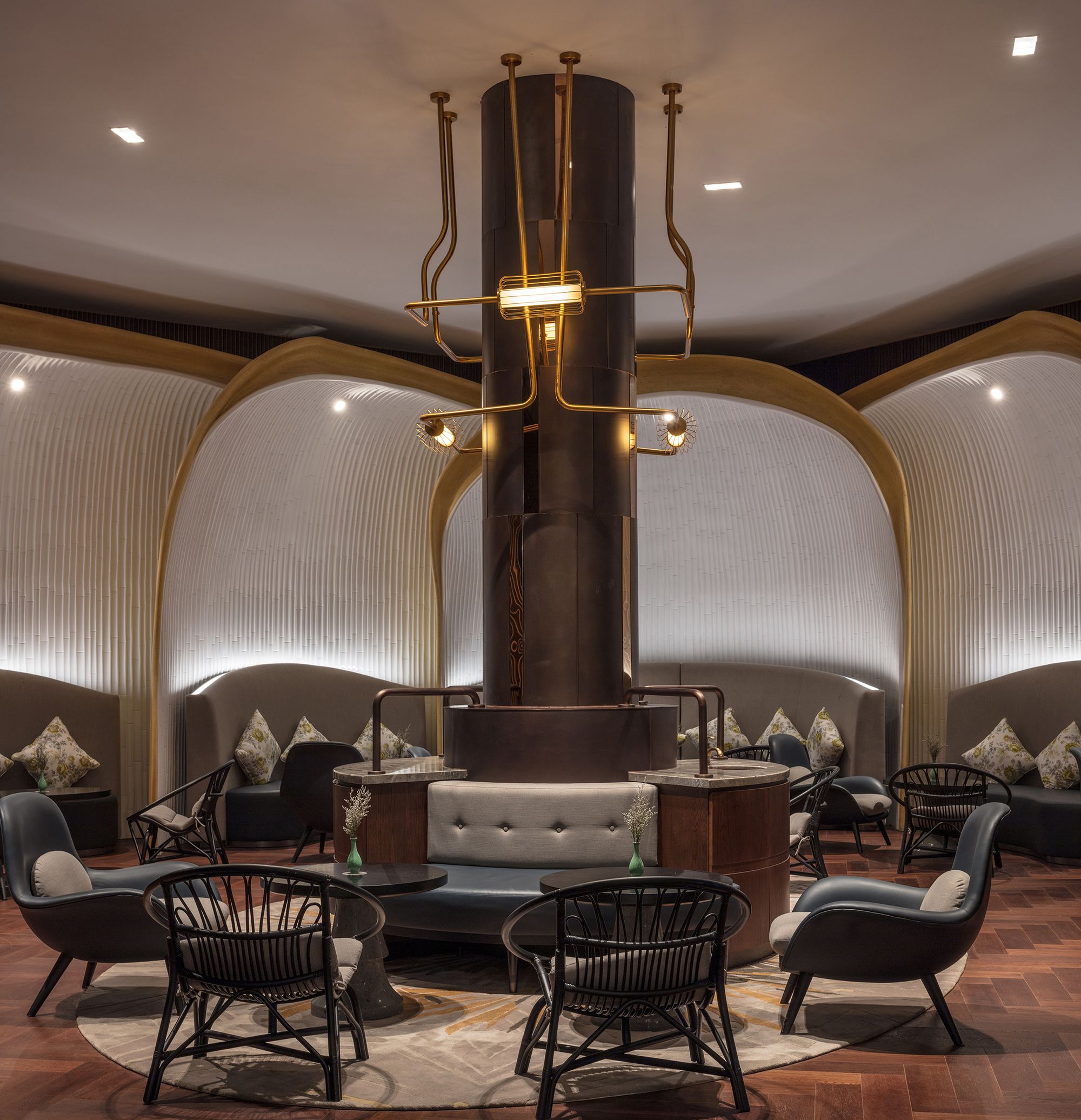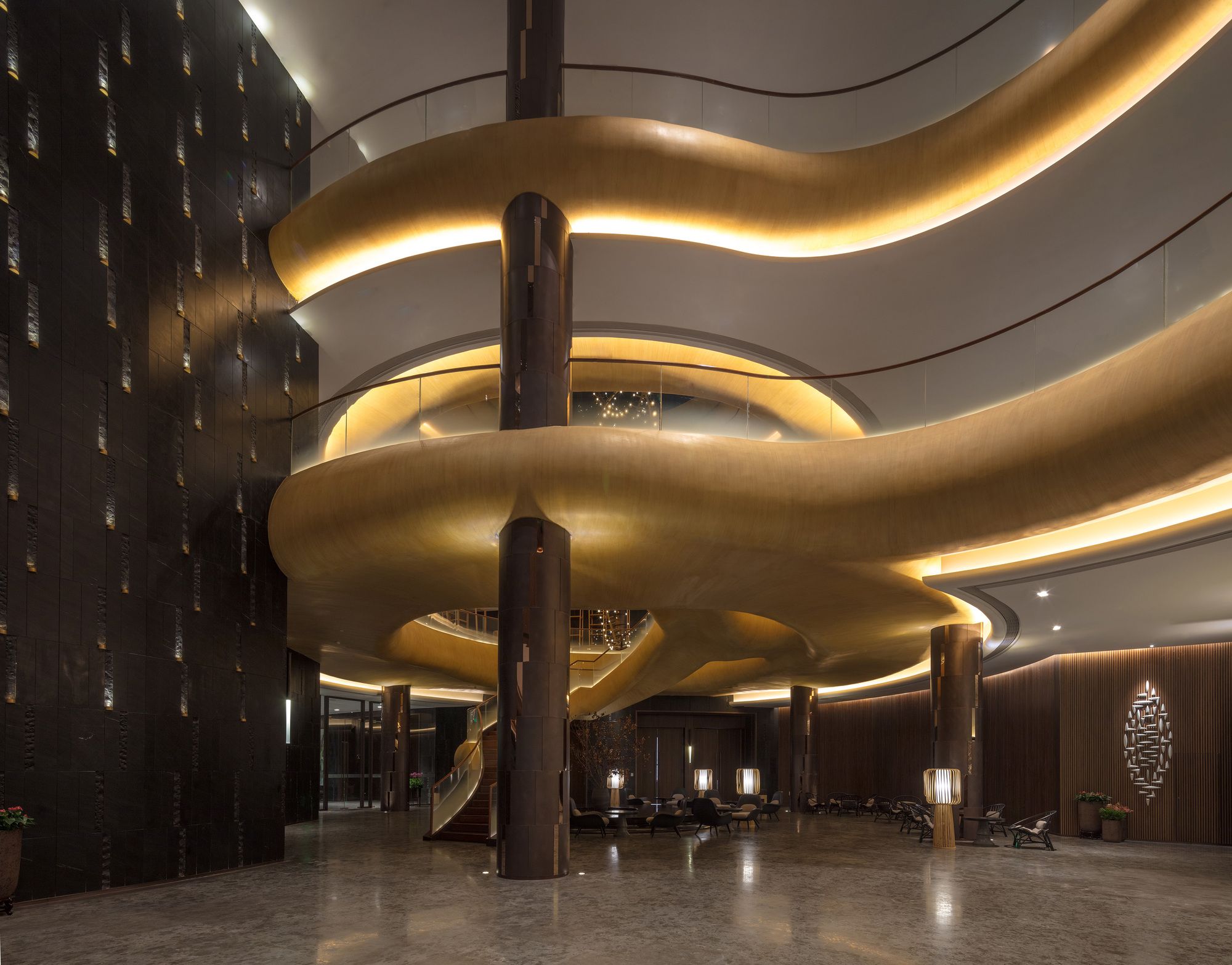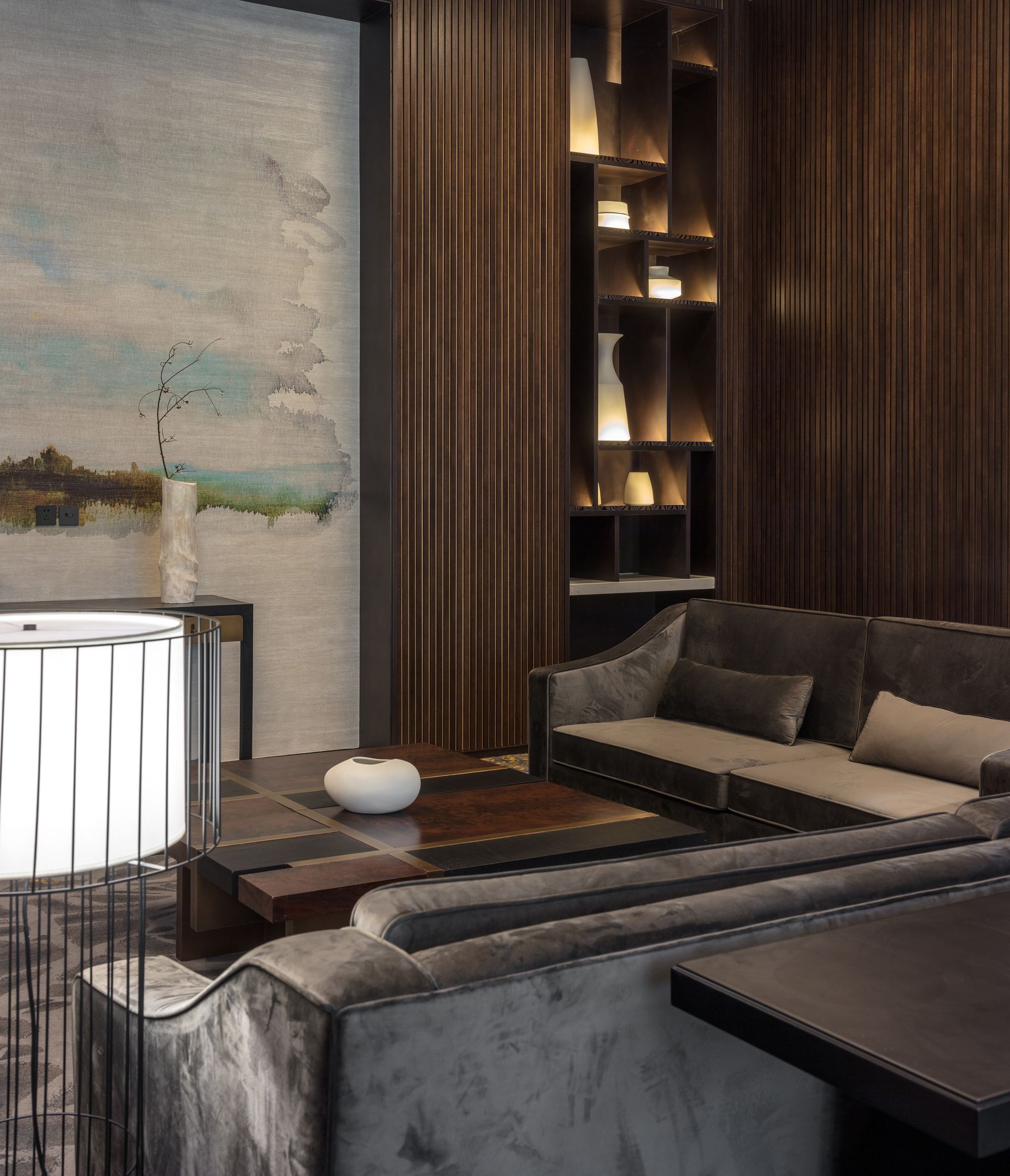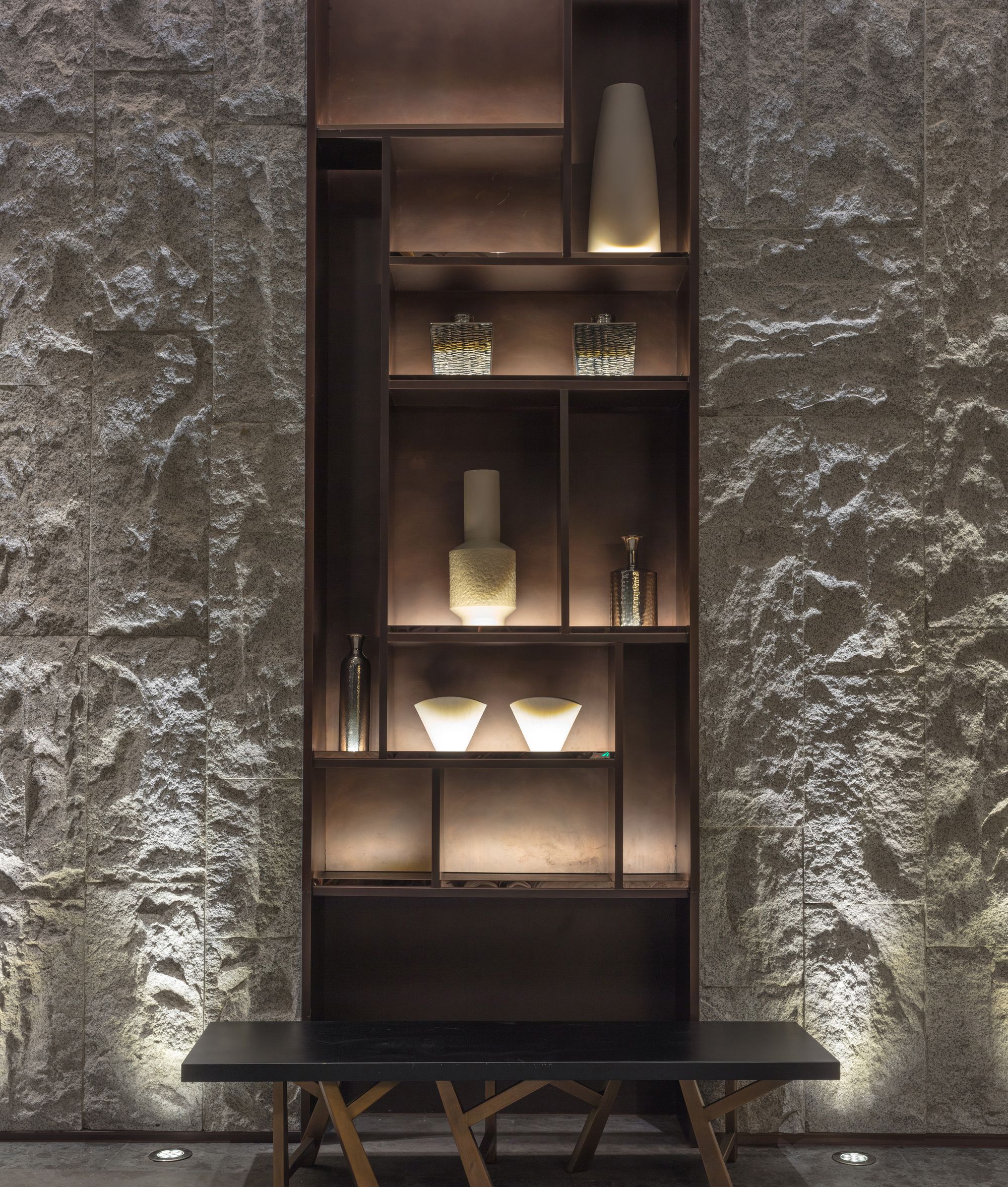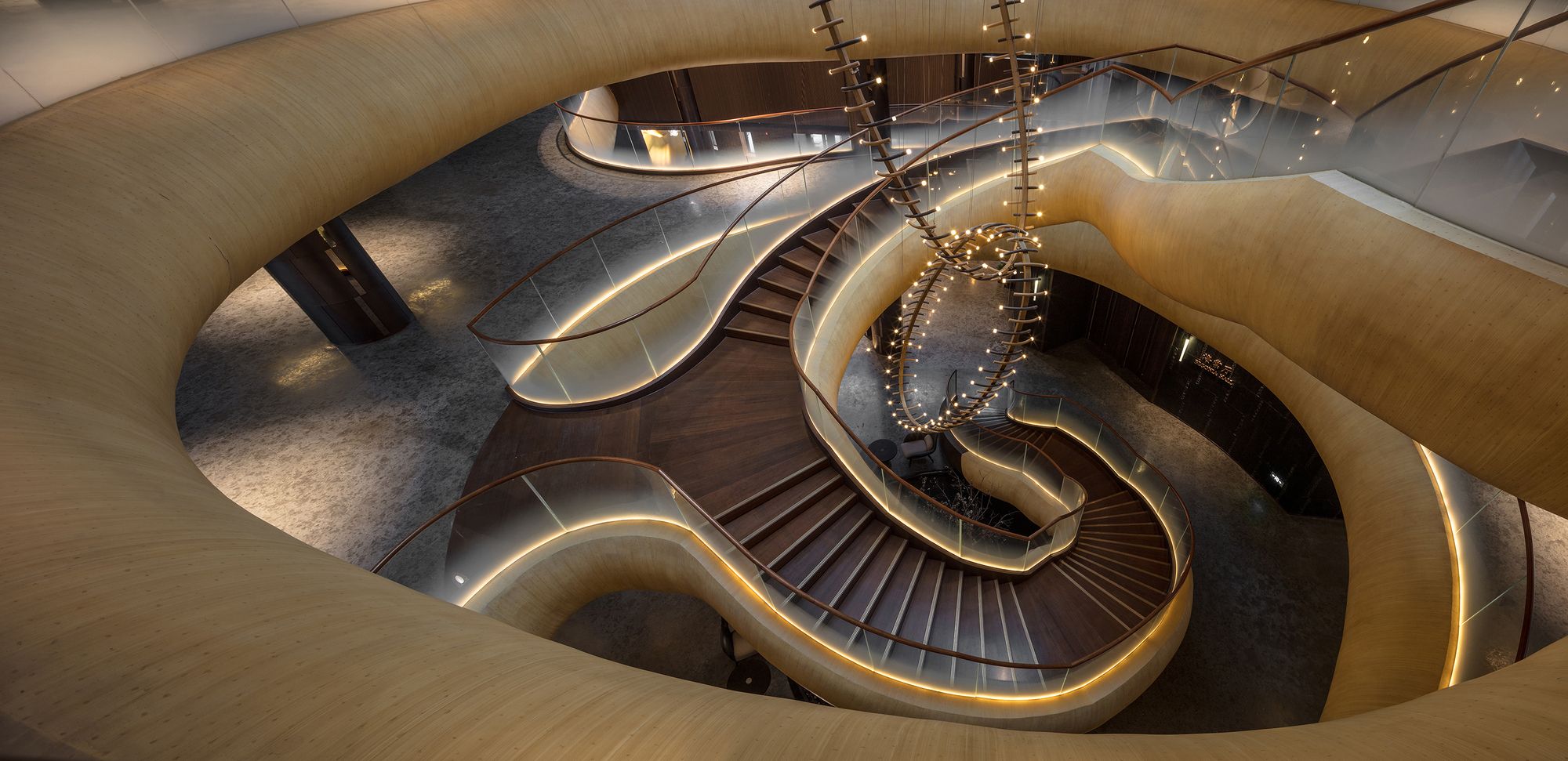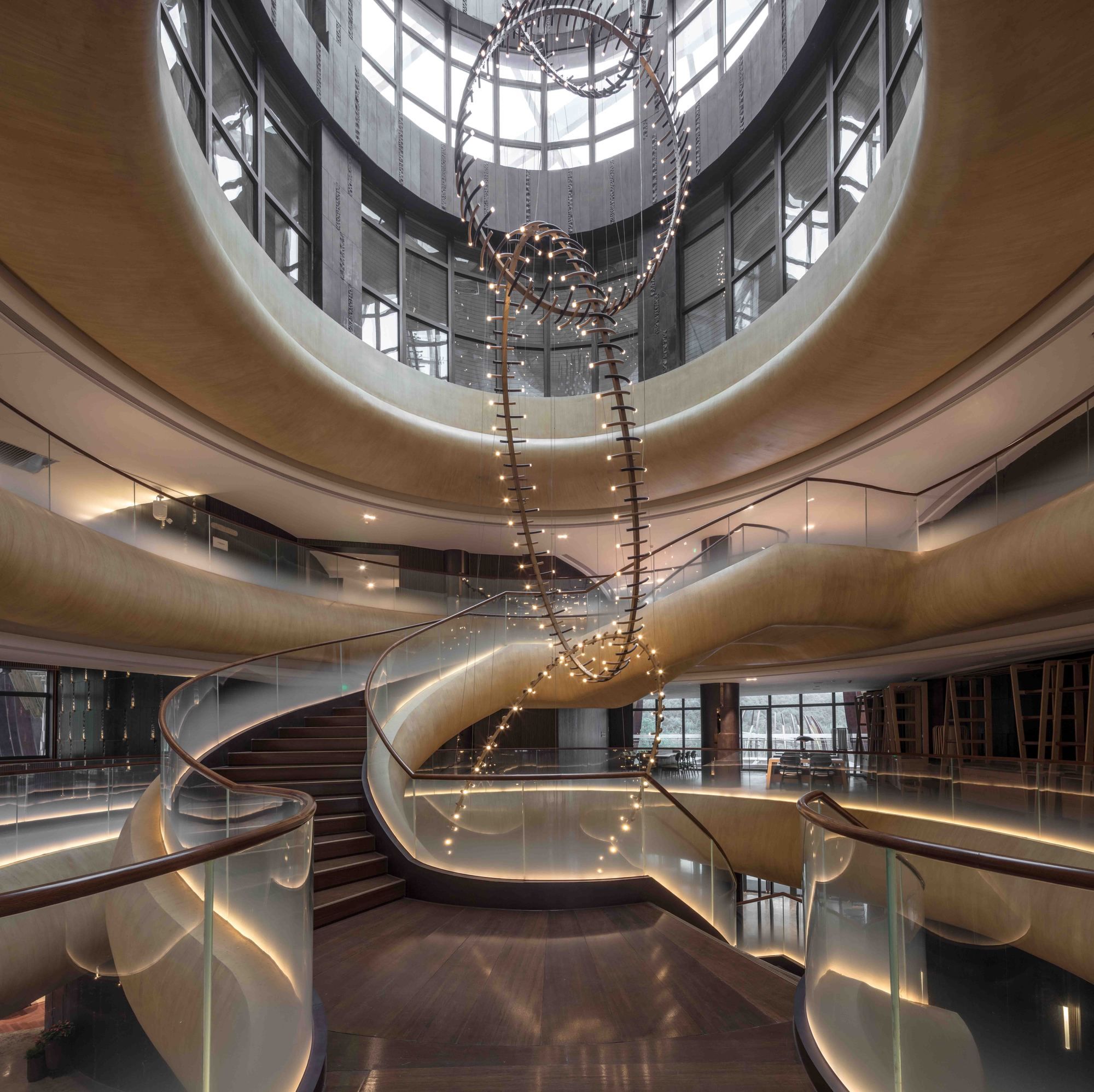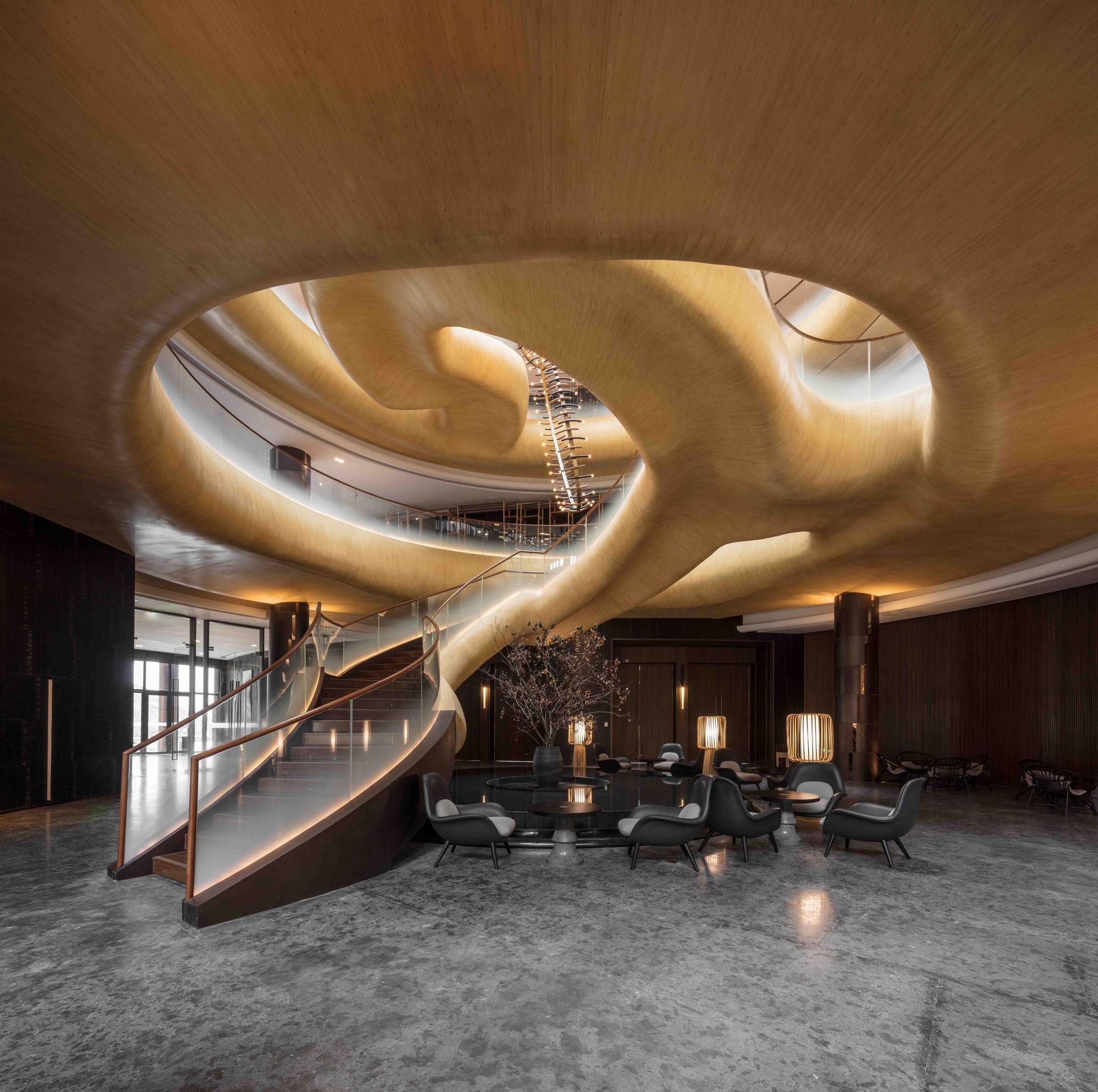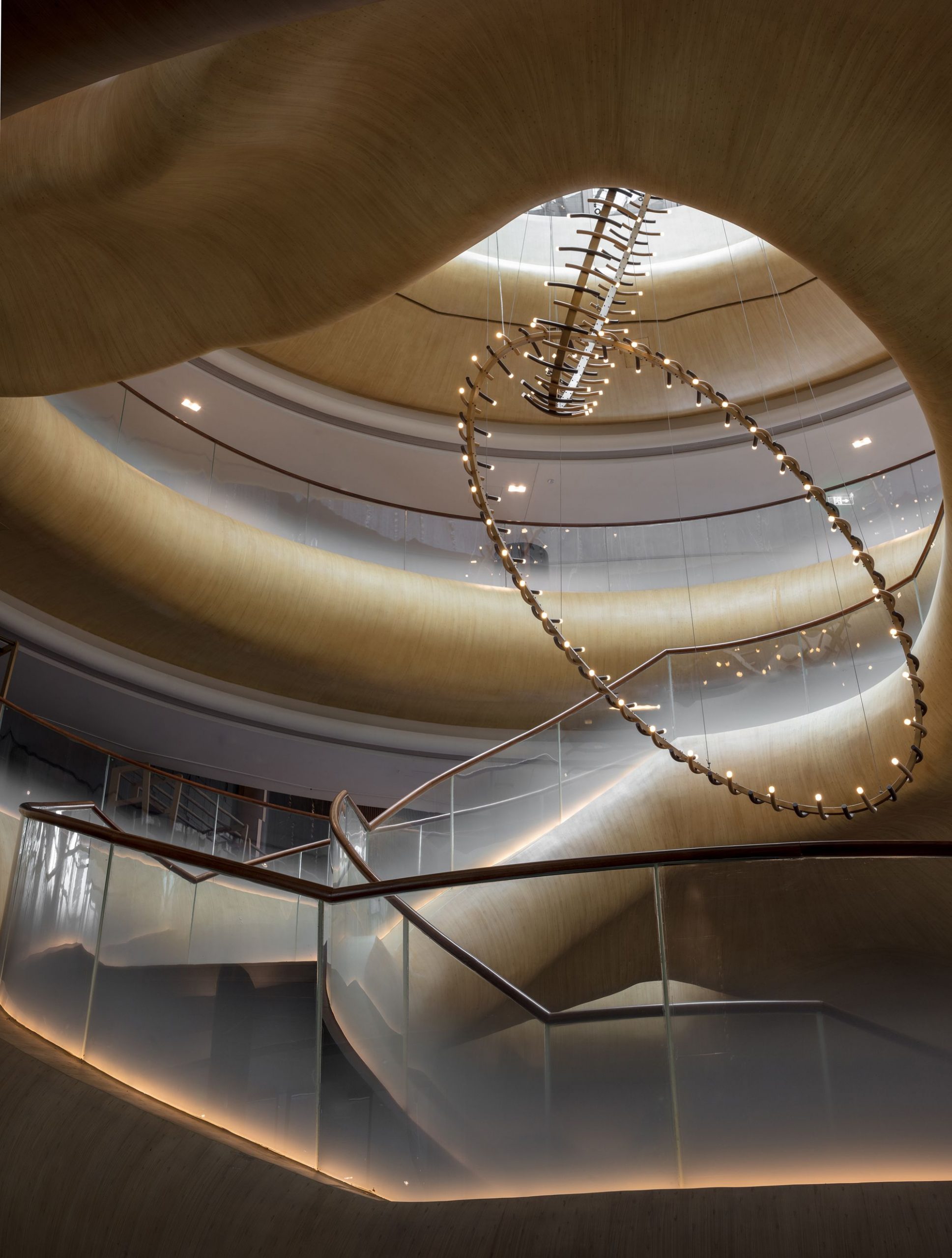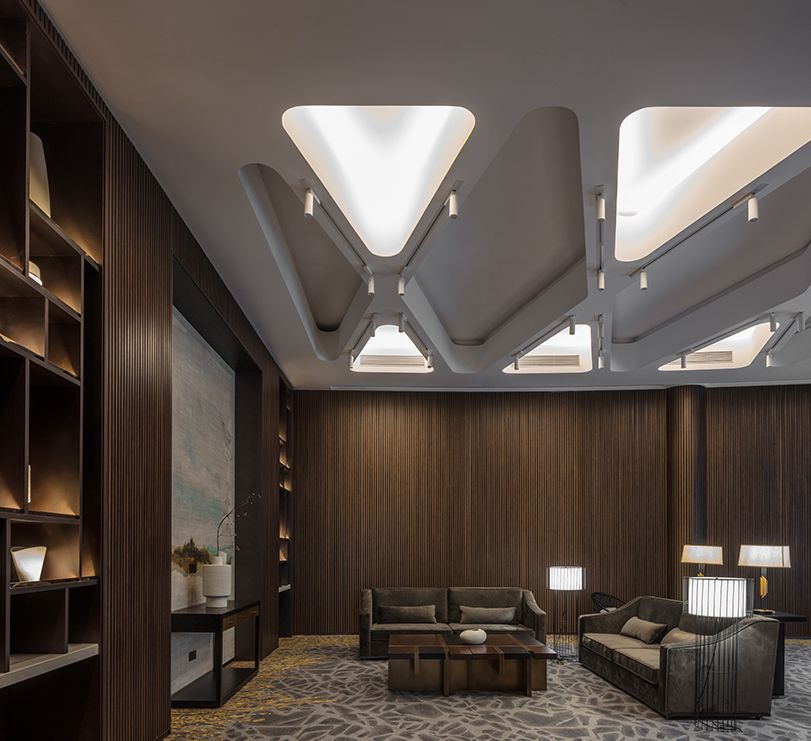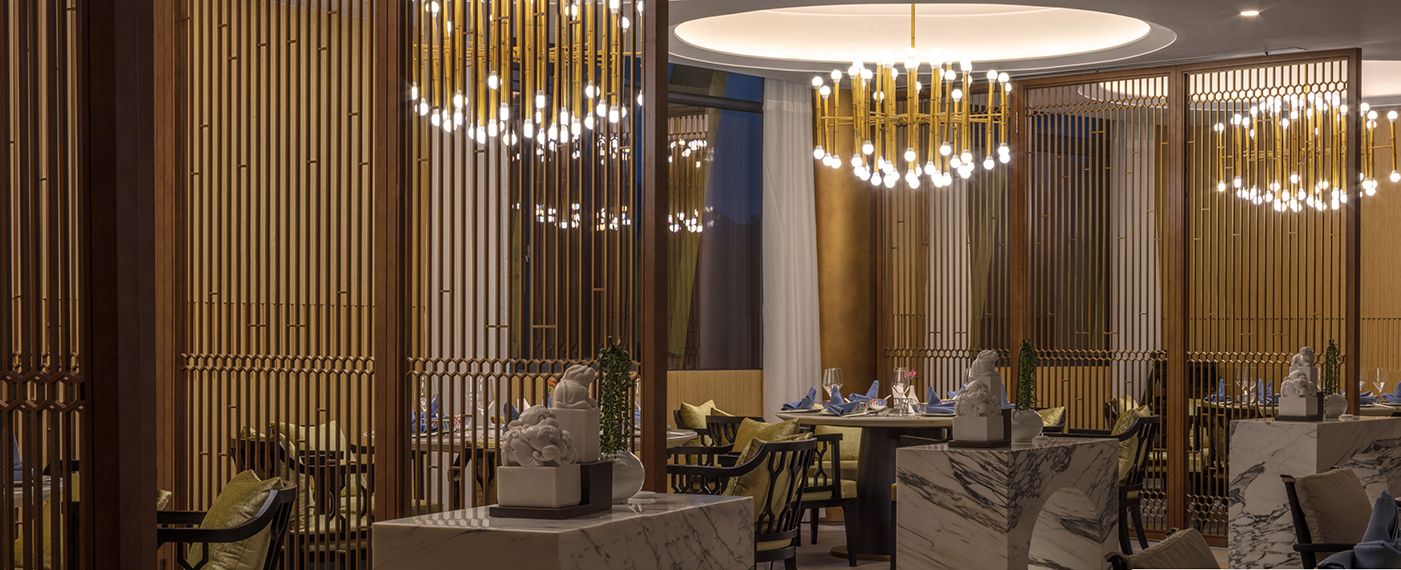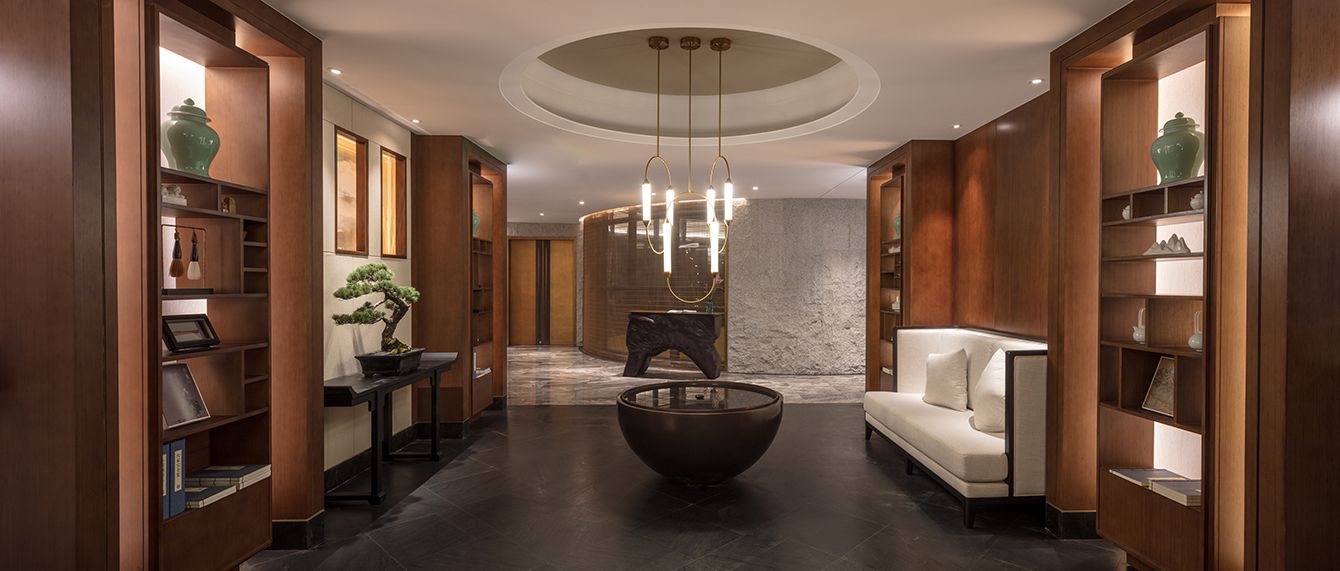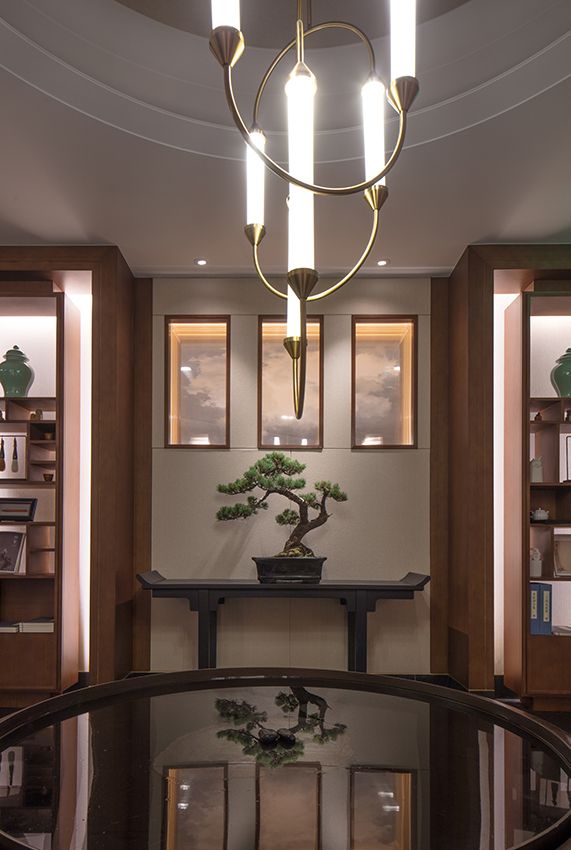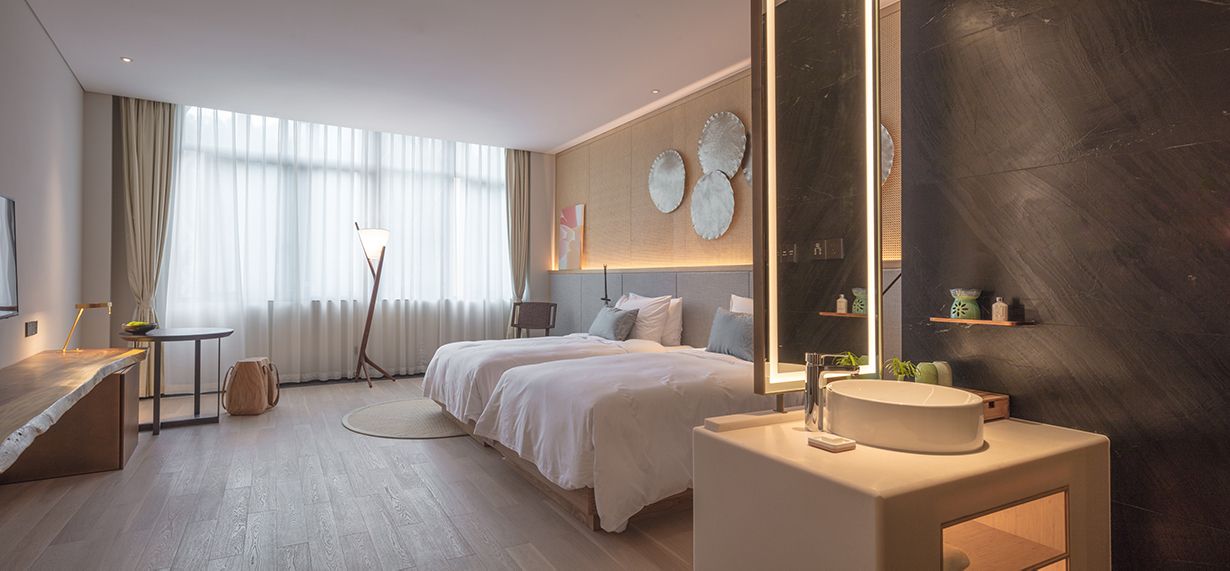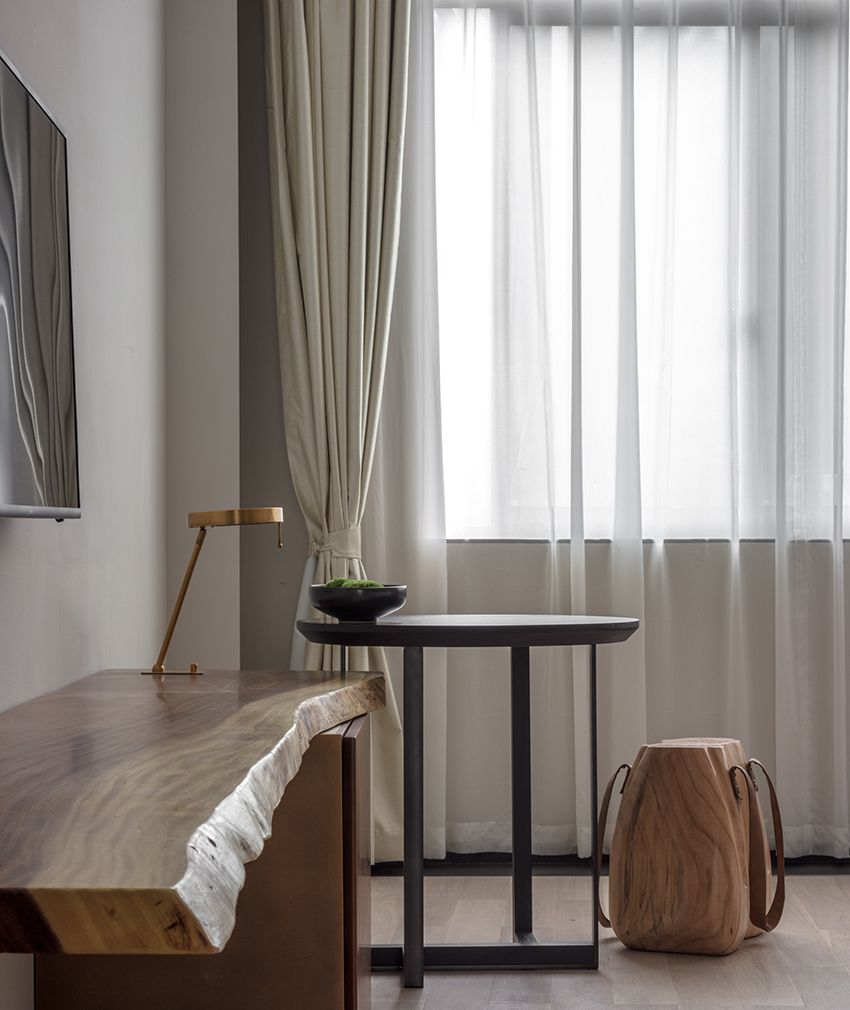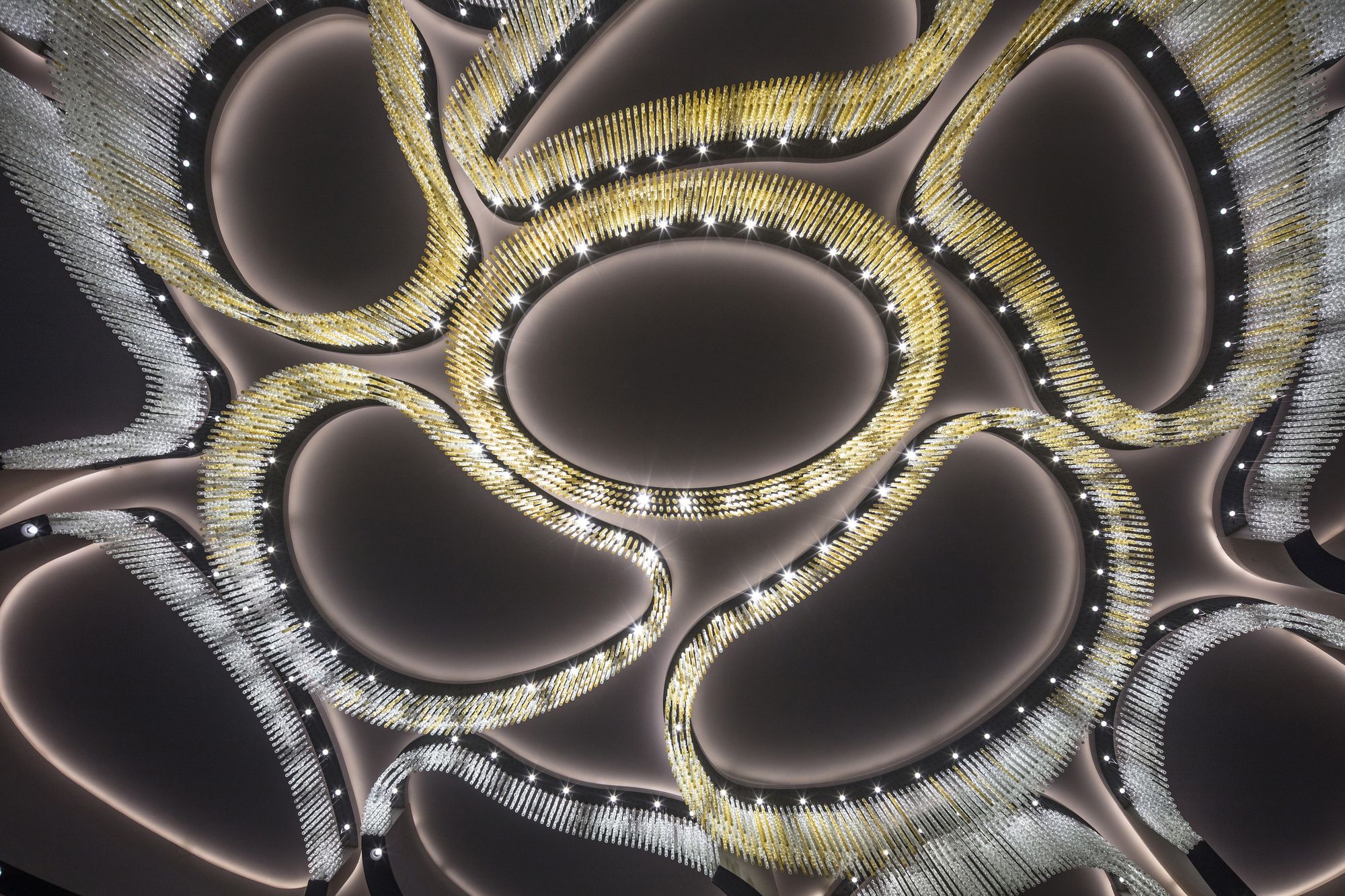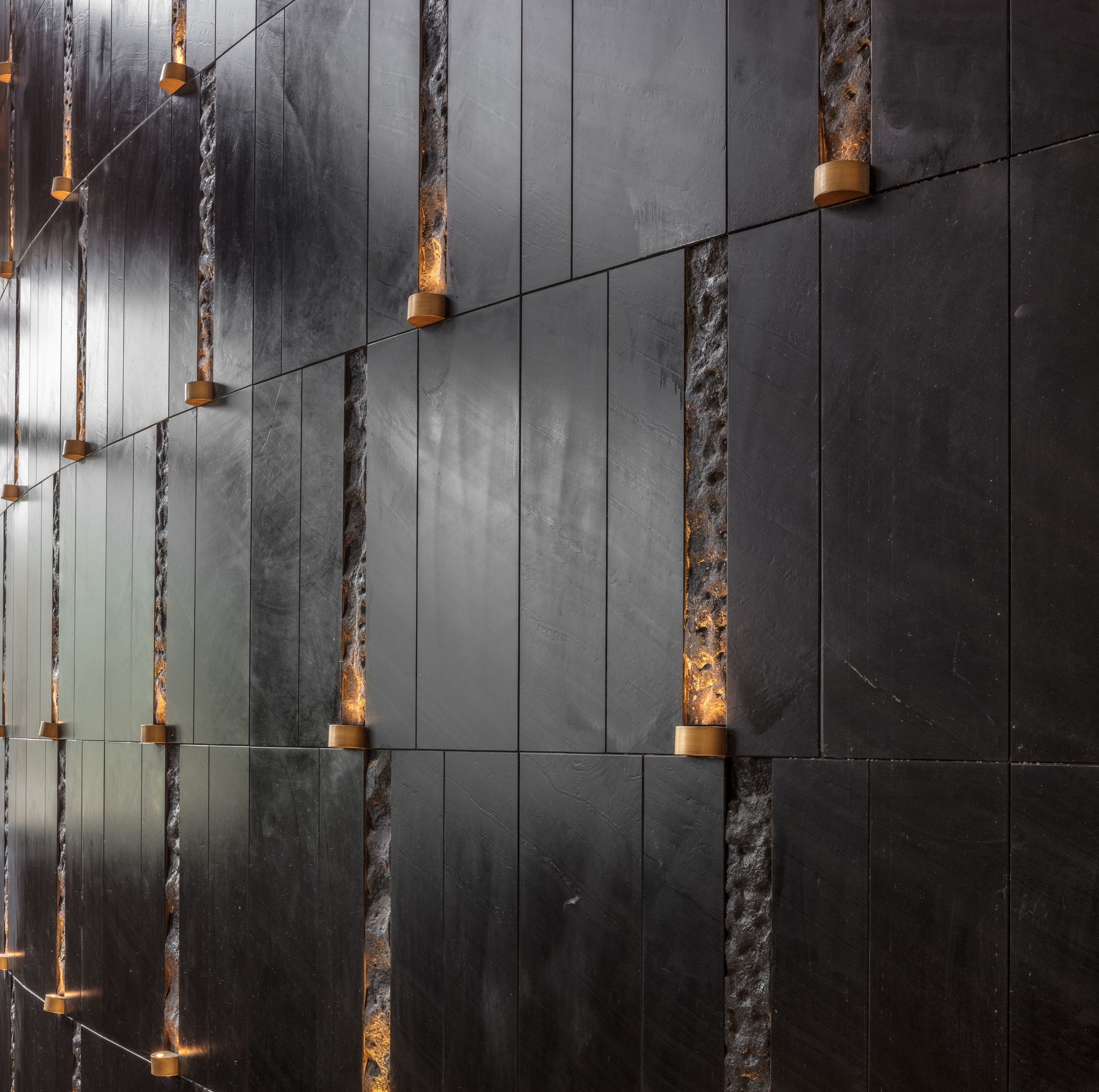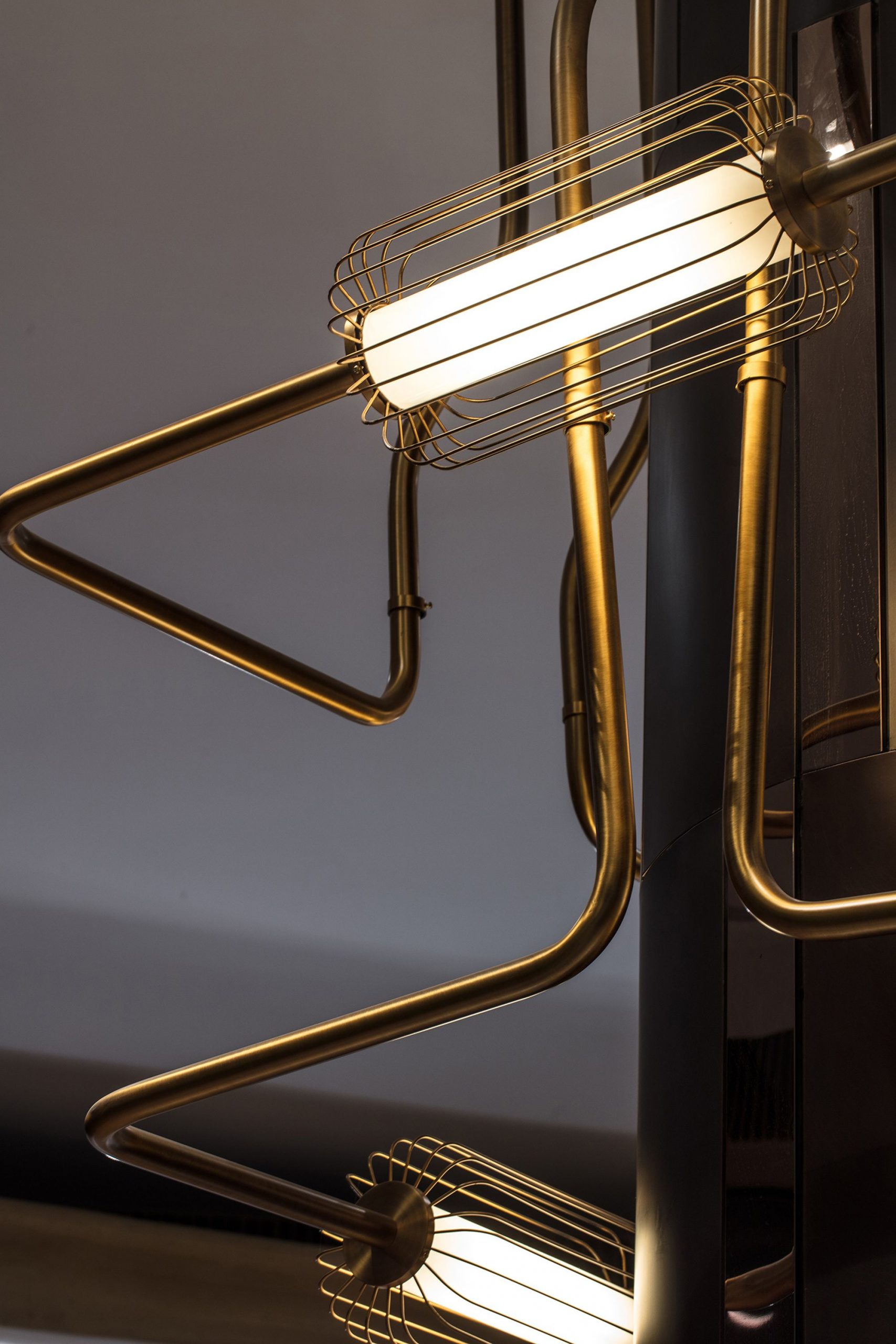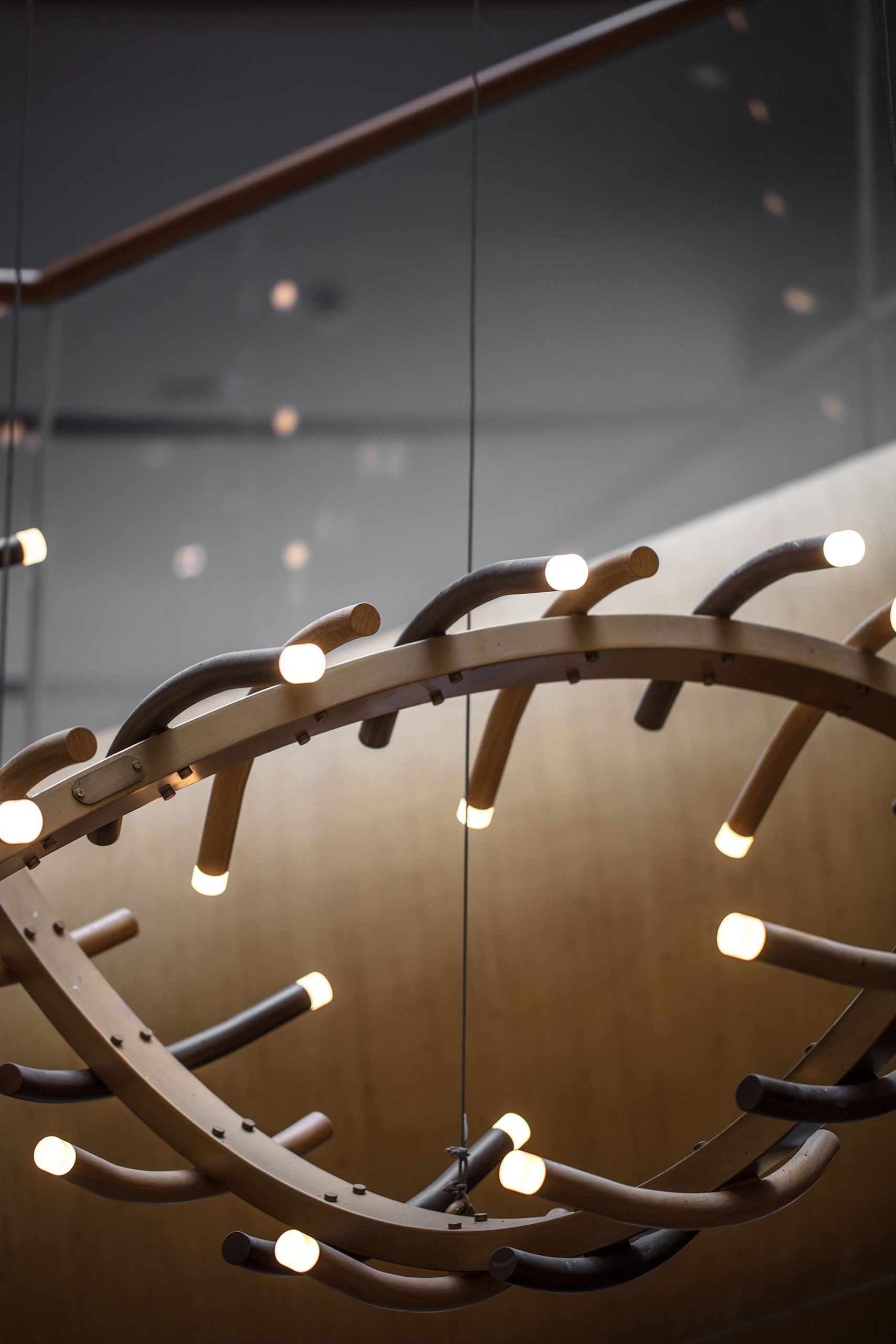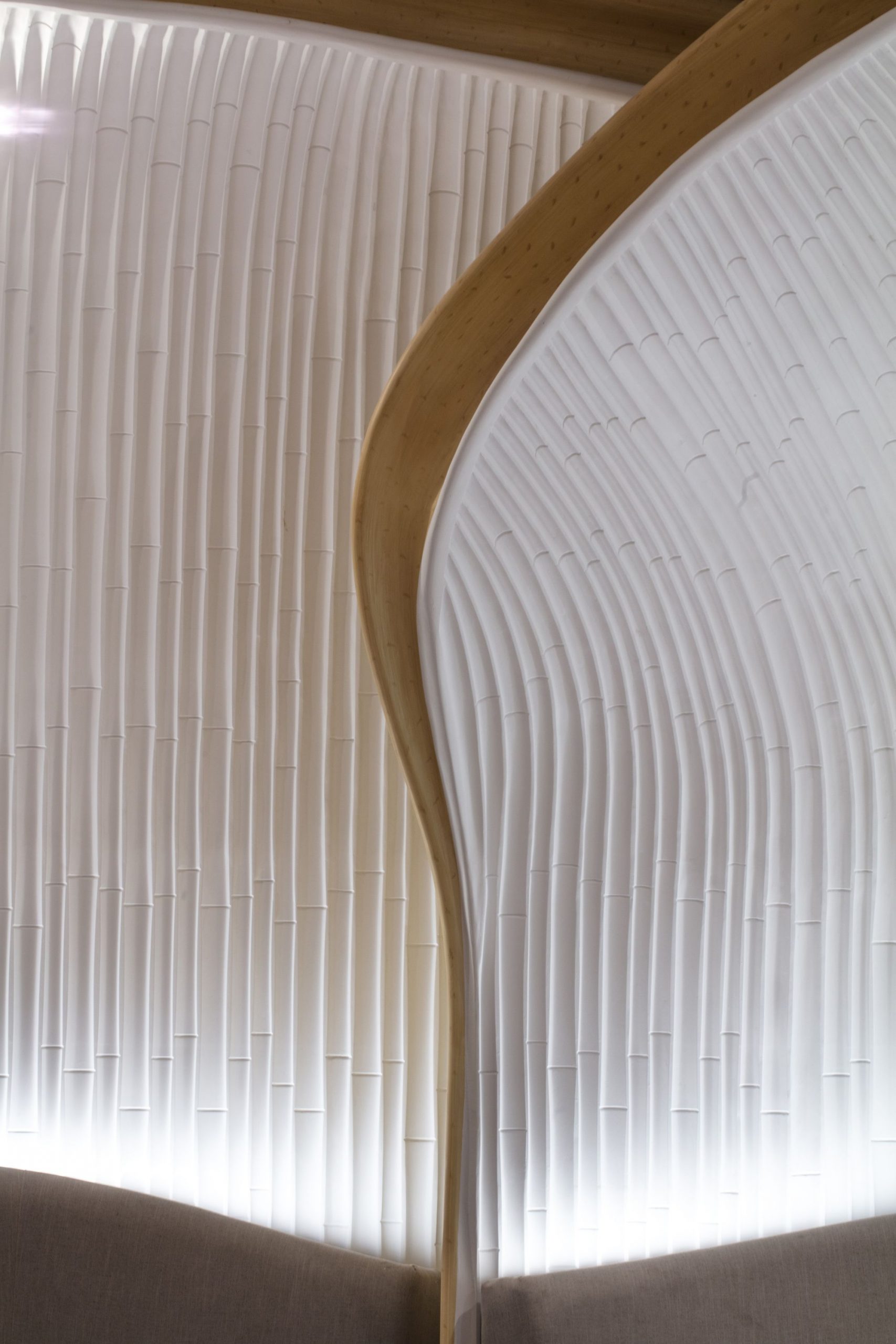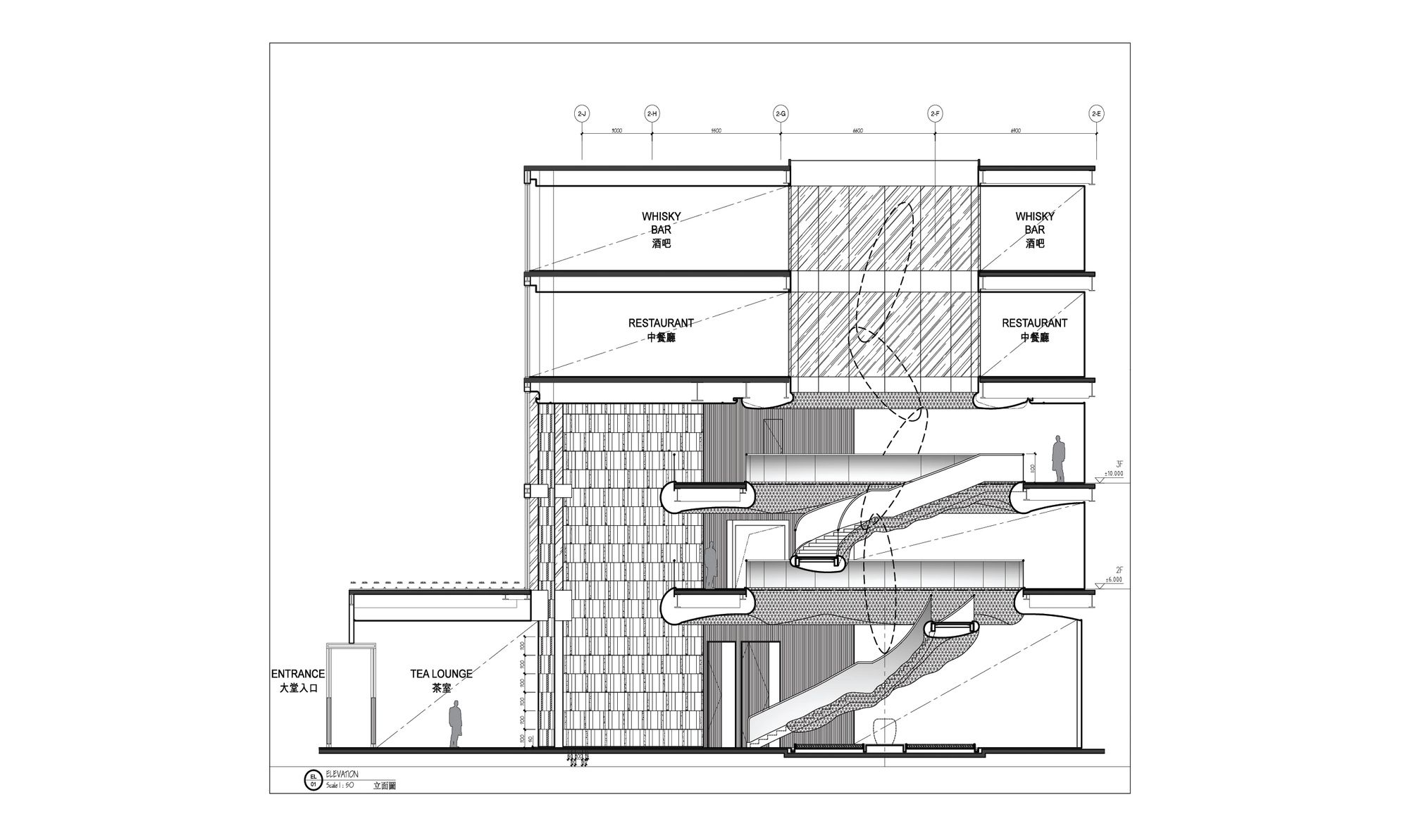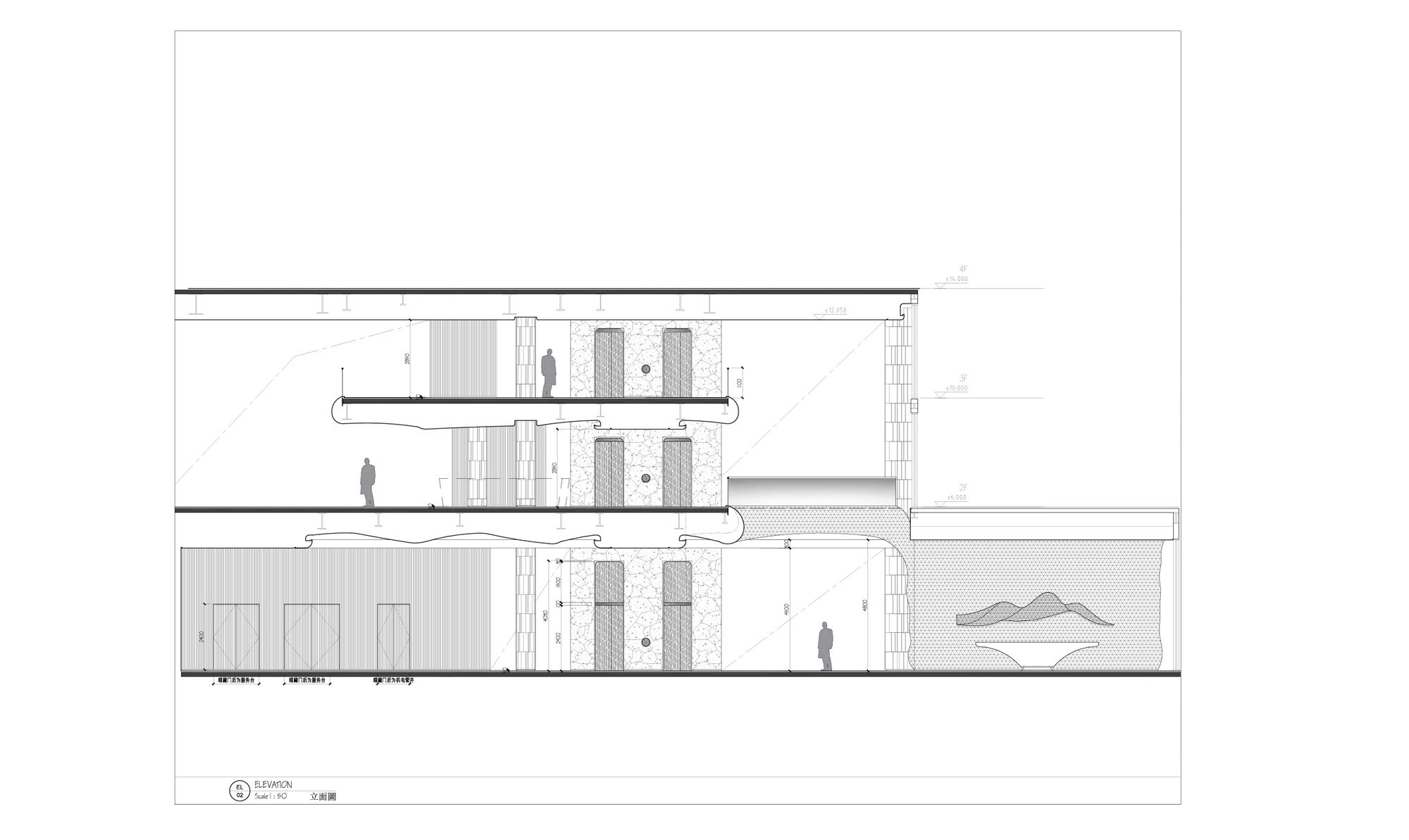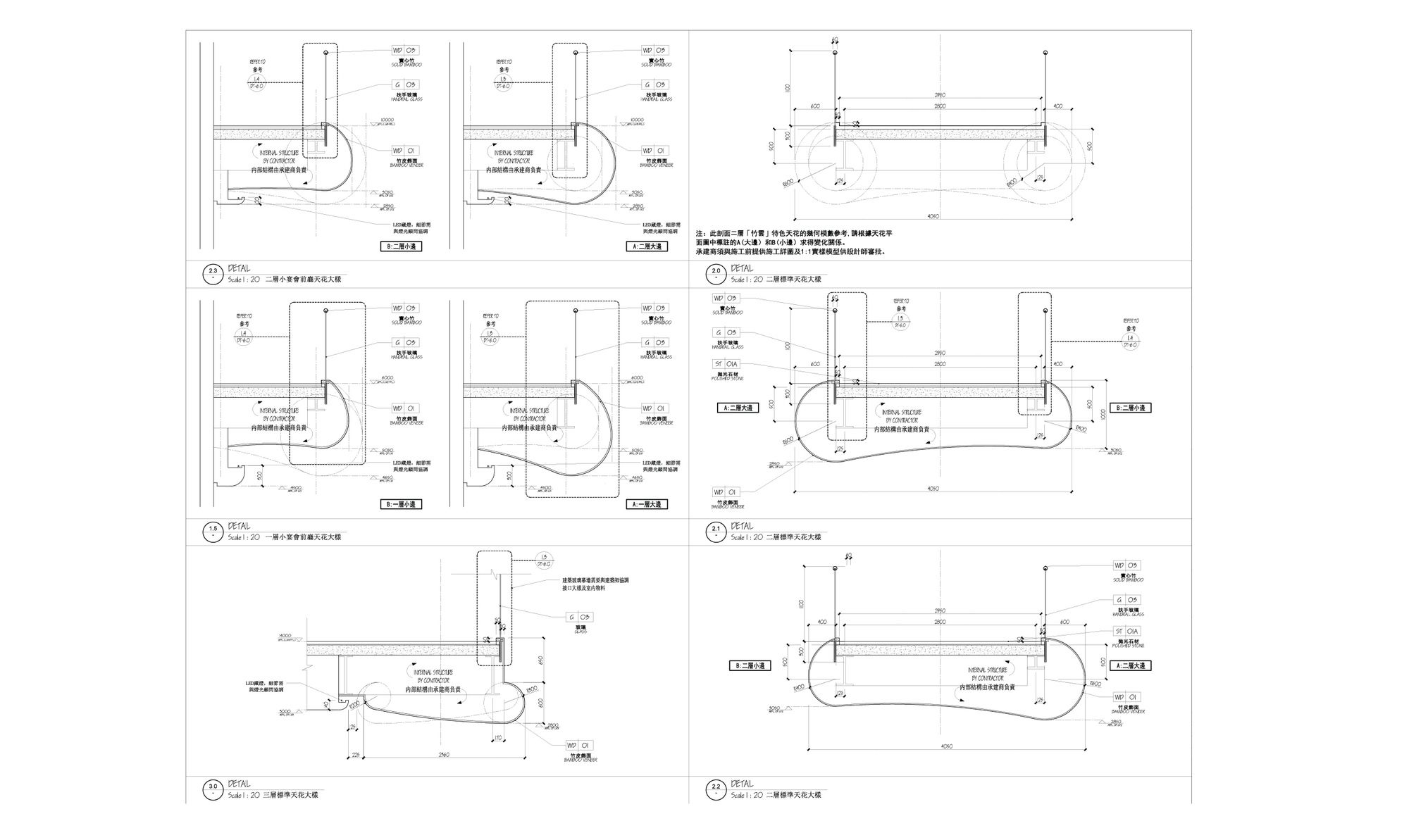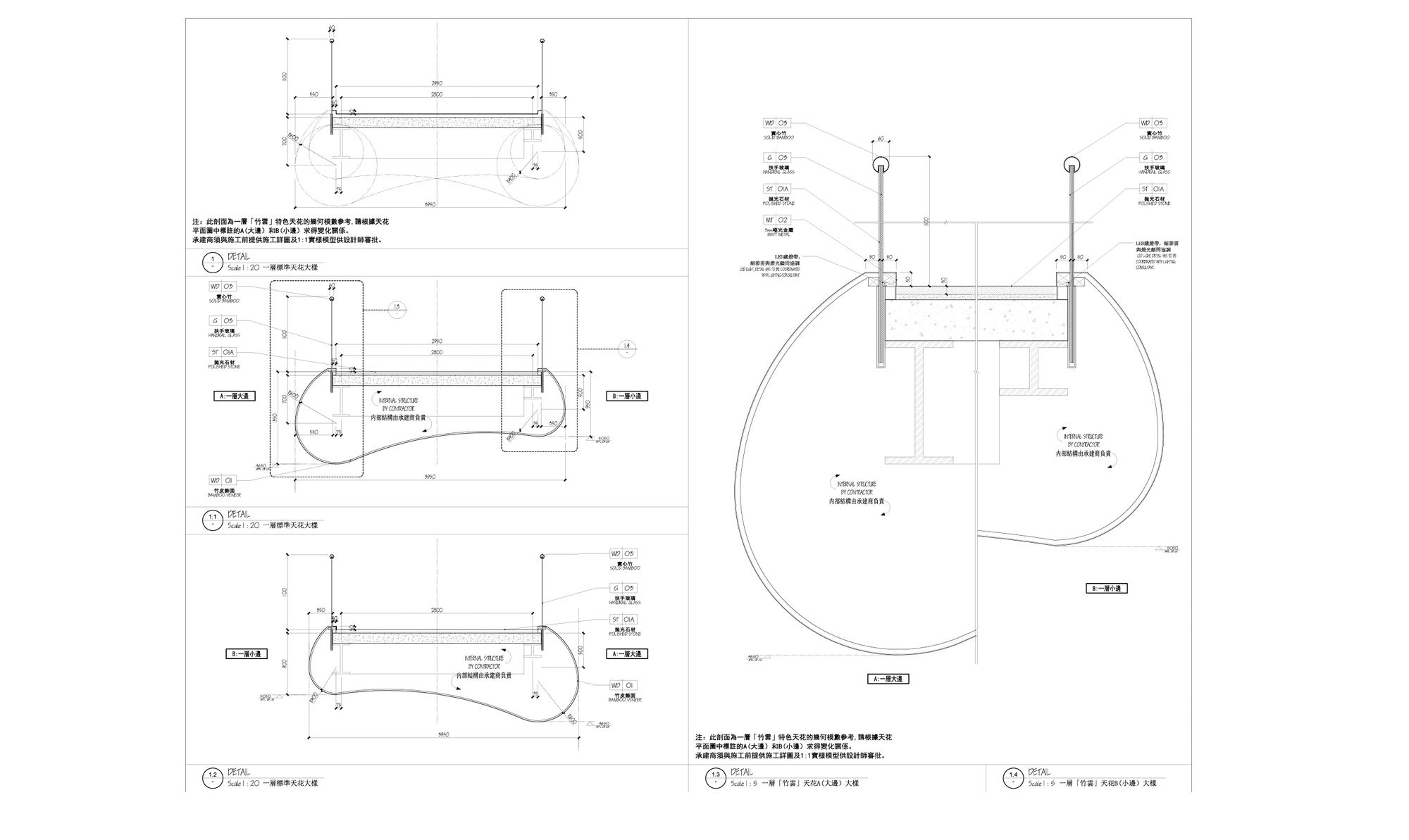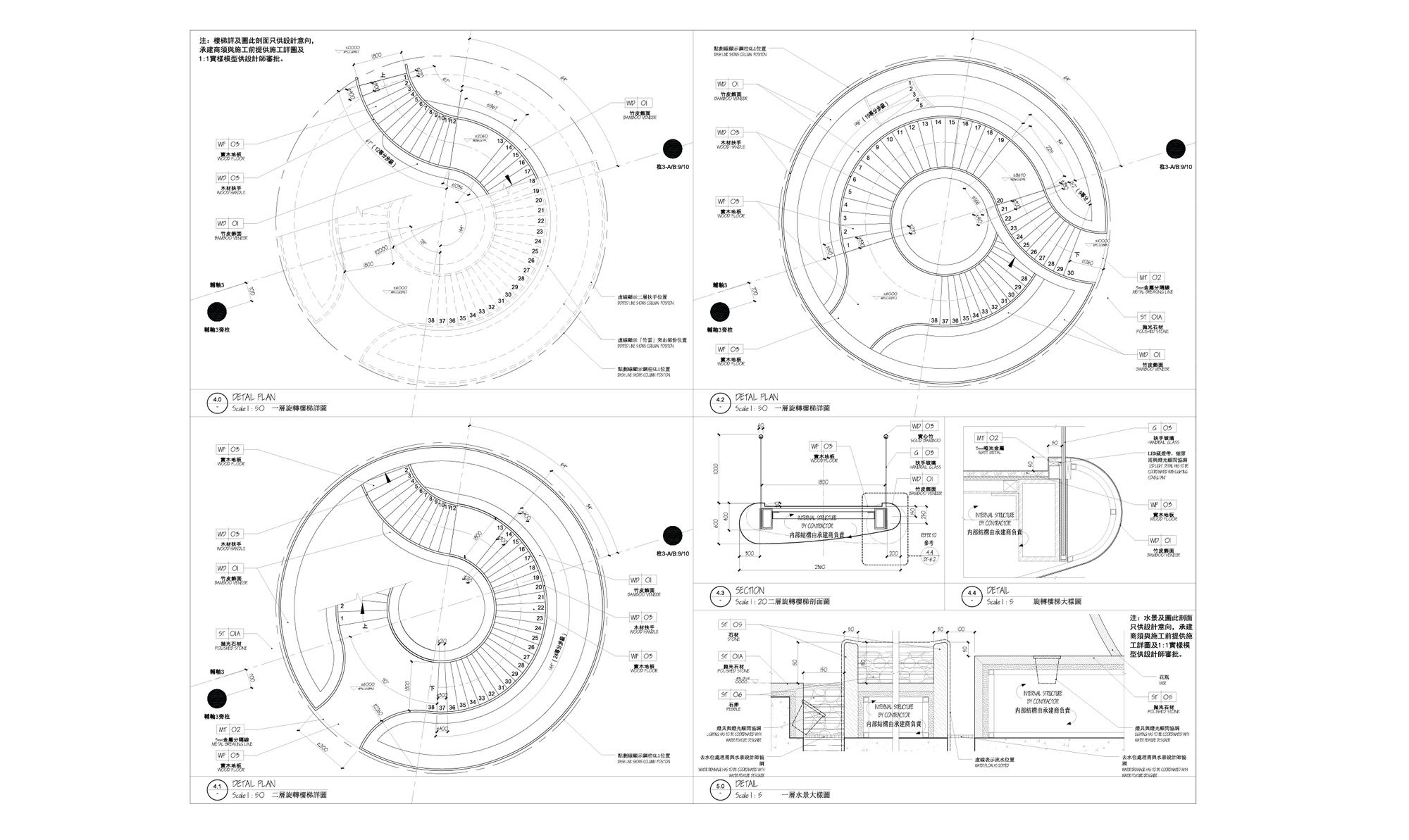Designed by Stylus Studio, Jo Lalli Resort Hotel is located in a beautiful wooded mountainous area of Moganshan, near the small town Deqing, close to Hangzhou and not far from Shanghai. This area with its, unspoiled nature with mountains, lakes, and waterfalls has traditionally been a popular destination for visitors from all over China and has a long history of being a more temperate summer vacation retreat for the population of Shanghai since the 1880s. This tradition has recently been revived and now there are a number of popular resorts taking advantage of the clear air and unspoiled natural environment.
The resort comprises of a number of villas located in the upper part of the valley and surrounding a lake reservoir. Our project is located in the lower part of the resort, adjacent to the main road and is intended to be the resort’s central guest facility.
The design philosophy has been to create a building that will seamlessly fit into its environment and provide a unique landmark for the whole resort. We have therefore developed the concept for the massing and the external and internal materials from the natural environment of Moganshan itself, inspired by Its unique beauty, combining the image of mountains, forests, and water into a single architectural statement.
The interior is bringing the architectural language inside the space and is bold, organic, and alluring with their ethereal, heavenly forms. With the design DNA mimicry of the surrounding area, the ballroom and lobby lounge both reinterpret the tea flower indigenous to Moganshan.
Stylus Studio found inspiration not only in materials, textures, and colors native to Moganshan but also in the design narrative of its past. Known as the “Shanghai Hamptons”, the aim was to entice guests back to the region — to relax and rejuvenate in style and inspire them by creating an unexpected experience using expected natural materials.
The main massing and facade elements of the design concept are inspired by the effect of the rainclouds rolling over the green mountains forming waterfalls rivers and lakes.
The planning and massing of the building clearly express both the functions and their relationships and provide a strong connection with the surrounding natural environment.
Sustainability is an important part of this project utilizing mainly passive sustainability elements such as the building orientation, external wall construction to provide a good level of insulation, sun shading protection, green roofs for added insulation and the use of local and renewable materials such as bamboo and local hardwood. Solar panels will be located on the upper flat roofs. A local water source will be diverted and used to create the external landscape water features, lakes and waterfalls. Rainwater will be collected stored and used for irrigation.
Project Info:
Architects: Stylus Studio
Location: Moganshan, Huzhou, Zhejiang, China
Lead Architects: Martin Jochman Dip Arch RIBA
Lead Interior Designer: Simon Zeng, Vincent Zhang
Architecture Design: Jade + Q&A Architects, Martin Jochman, Kiona Qing W.Area: 9600.0 m2
Project Year: 2018
Photographs: Edmon Leong
Manufacturers: Belle Stone
Project Name: Joe Lalli Narada Resort
photography by © Edmon Leong
photography by © Edmon Leong
photography by © Edmon Leong
photography by © Edmon Leong
photography by © Edmon Leong
photography by © Edmon Leong
photography by © Edmon Leong
photography by © Edmon Leong
photography by © Edmon Leong
photography by © Edmon Leong
photography by © Edmon Leong
photography by © Edmon Leong
photography by © Edmon Leong
photography by © Edmon Leong
photography by © Edmon Leong
photography by © Edmon Leong
photography by © Edmon Leong
photography by © Edmon Leong
photography by © Edmon Leong
photography by © Edmon Leong
photography by © Edmon Leong
photography by © Edmon Leong
photography by © Edmon Leong
photography by © Edmon Leong
photography by © Edmon Leong
1F Plan
2F Plan
Section
Drawing
Detail
Detail
Detail


